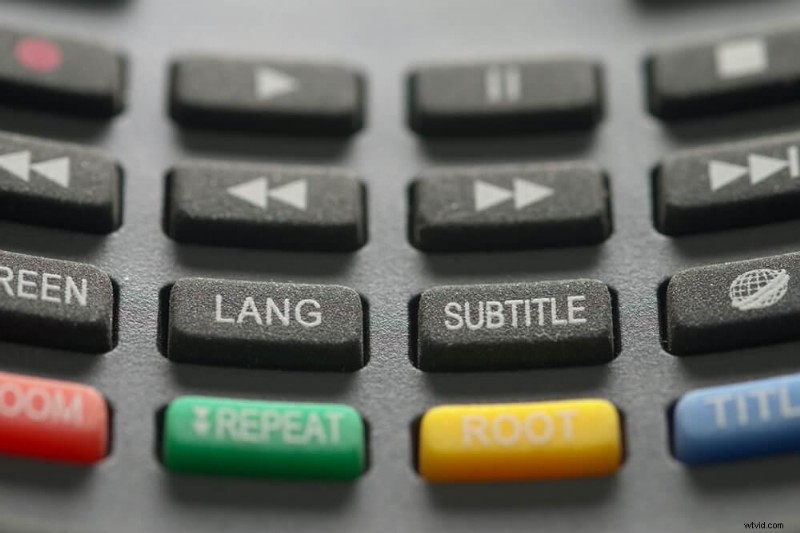L'ultima serie di successo di Netflix, Squid Game, si è rivelata un tesoro di intrattenimento istantaneo per i suoi spettatori. Lo spettacolo presenta 456 giocatori finanziariamente disperati che si contendono il premio in denaro del valore di $ 45 miliardi, ma quei giochi diventano rapidamente mortali mentre combattono l'uno contro l'altro e contro altri contendenti come loro.
Il dramma ricco di azione segue alcuni personaggi nella loro ricerca attraverso questi incontri che sfidano la morte mentre cercano disperatamente di non essere sconfitti da nessun altro o rischiano di essere eliminati prima di raggiungere la corsia della vittoria con tutto questo bottino in palio.
Con una trama che mescola satira e melodramma, Squid Game è anche senza dubbio uno degli spettacoli più innovativi, originali e attesi su Netflix. Questa avvincente storia su quanto le persone possono spingersi per soldi si basa su diversi giochi.
I sei giochi giocati dai concorrenti sono tutti basati su giochi per bambini coreani che molte persone già conoscerebbero, come il tiro alla fune e il semaforo rosso/verde. L'ultimo gioco si chiama "gioco dei calamari".
La trama:il gioco dei calamari

450 persone piene di debiti mettono in gioco la loro vita per vincere denaro. Ogni partita ha un risultato diverso e se perdi anche una sola partita gli costerebbe la vita!
Lo spettacolo evidenzia la divisione di classe della Corea del Sud con otto personaggi principali che interpretano ruoli importanti durante tutti e sei i round:da un boss di una banda a un uomo d'affari un tempo di successo ora ricercato dalla legge per aver derubato i suoi clienti, da un operaio migrante che cerca di vincere milioni in questi giochi mortali a un disertore nordcoreano e altro ancora.
Lo spettacolo ha ricevuto il plauso della critica per la sua trama emozionante, i dialoghi eccellenti e la storia avvincente. Ma l'unica lamentela proveniente da alcuni spettatori riguarda i sottotitoli scadenti nello spettacolo. La serie di successo è stata criticata per "grossolane traduzioni errate" nei sottotitoli. Un esperto di lingue ha avvertito che il vero significato degli eventi rappresentati in questo programma di successo potrebbe perdersi tra l'altro perché il testo sullo schermo è impreciso.
Come con tutte le traduzioni, i significati a volte devono essere adattati e alcuni dettagli si perdono nella traduzione perché le lingue non possono essere tradotte direttamente. Tuttavia, i sottotitoli spesso mancano di informazioni vitali o errori di traduzione grossolani dovuti a:
- Spazio limitato (il programma televisivo ha poco spazio sullo schermo)
- Complessità tra parole e struttura della frase; le frasi difficili rendono i testi più lunghi che si traducono male su schermi piccoli senza funzionalità di evidenziazione.
Errori di sottotitolazione
Gli errori dei sottotitoli nei film e nei programmi TV sono così comuni che dovrebbero quasi far parte dell'esperienza visiva. Tuttavia, ciò di cui la maggior parte degli spettatori non si rende conto è che questi errori spesso vanno ben oltre le parole errate e la cattiva grammatica; molte volte i sottotitoli includono contenuti non destinati a un pubblico straniero.

In una certa misura, è comprensibile il motivo per cui ciò accade. I distributori stranieri spesso assumono manodopera a basso costo nei paesi in via di sviluppo per risparmiare sui costi di sottotitolazione. Se a un lavoratore mal pagato viene assegnato il compito di tradurre e sottotitolare un film di due ore, lui o lei troverà comprensibilmente il modo di essere il più efficiente possibile con il tempo e lo sforzo. E se vieni pagato pochi centesimi l'ora, hai intenzione di discutere con il tuo datore di lavoro sulla grammatica corretta?
Tuttavia, non ci vuole molto a scavare online prima che i fan che conoscono le lingue straniere si imbattano in alcuni errori piuttosto interessanti che vanno oltre le semplici lettere mancanti. Di tanto in tanto, sentiremo parlare di fan che preferiscono i sottotitoli al doppiaggio, poiché ritengono che sia più accurato.
Questa convinzione deriva probabilmente dalla pratica comune di rimuovere contenuti o dialoghi che potrebbero essere offensivi per i paesi stranieri in cui il materiale verrà distribuito, nonché correggere errori grammaticali e ortografici minori che derivano da vincoli di tempo sulla produzione dei sottotitoli. Ma alcuni non sono così facilmente giustificabili...
Perché gli errori dei sottotitoli sono così comuni?
Non sappiamo esattamente quanti errori di sottotitoli vengono creati ogni anno, ma la cifra è probabilmente superiore a decine di milioni. Gran parte dei contenuti sottotitolati proviene da vari paesi, quindi non sorprende che le lingue coinvolte siano spesso l'inglese e non l'inglese.
Ciò significa che ci sono molte più possibilità di errore che se tutto fosse in una sola lingua. Ad esempio, i produttori cinematografici francesi hanno accesso al supporto audiovisivo gallico piuttosto che ricorrere ad amici americani o canadesi per farsi aiutare con i sottotitoli, un vantaggio che non si applica alle loro controparti indiane che devono rivolgersi a madrelingua al di fuori dell'India per ricevere assistenza con i sottotitoli in inglese.
Il fatto che i non madrelingua tendano ad essere pagati meno dei professionisti renderebbe i problemi ancora più probabili. Inoltre, più una lingua è sconosciuta, maggiore è il rischio di errori.
Traduzioni letterali
I non madrelingua a volte applicano una traduzione troppo letterale dalla propria lingua all'inglese. This can lead to odd sentences that may convey the meaning, but not the style or rhythm of the original.
In some cases, it could be argued that nothing is lost - apart from a few superfluous words which could have been better used elsewhere. However, in most instances an overly literal approach results in “noise” – stuff that’s surplus to requirements and should have been cut out.
Punning Subtitles
A subtitler has a limited space through which to express themselves so puns are likely to pose problems.
Subtitles often try to convey the same feeling as the original dialogue, but puns rarely translate well. As a result, it’s common for subtitles to lose their “punch”. In addition, the subtitler has to pick from a handful of possible substitutions that can sometimes make little sense.
Lack of Training
Subtitling is an art and a craft which takes time to learn. Even native speakers need years of experience before they can turn out error-free subtitles.
It’s not surprising, therefore, that non-natives are going to take even longer - especially if they receive little or no training prior to employment. In fact, many will probably never become competent subtitlers despite being immersed in their source language for years on end!
Tight Deadlines

The high demand for subtitles means most providers aren’t about to ask their staff to submit work late even if there are problems with quality control. So, deadlines are usually tight leading to an ever-increasing risk of mistakes creeping into the final product.
There are many reasons why subtitles go wrong but these are probably the main ones… which hopefully helps explain why there’s so much incorrect subtitling out there!
Poor Timing
There are various timing methods for adjusting subtitles to fit the dialogue. These include:
- Lead In/Lead Out
- Preferred Timing (PTS)
- Adopted Timing (AT)
- Center Cut
They all work well, but usually it’s necessary to re-time one or more lines because of errors or fluctuations in the source. This changes the length of time that the subtitle appears onscreen - often resulting in a mismatch with what’s being said. It’s not surprising therefore that this is another common mistake!
Subtitles also have to deal with overlapping speech which can be difficult if there are problems aligning subtitles with their corresponding audio track. The only solution is to delay showing subtitles until after they’ve spoken - which again can result in timing errors.
Sticking to Exact Phrasing
Some subtitle formats allow the creator to use exact English phrases verbatim . This is intended only for places where the dialogue is being quoted or sung - but some subtitlers see it as an opportunity to ignore correct translation principles by sticking to their own language style.
They figure that if they’re close enough, viewers will understand what’s being said even though it may be incorrect. It might not affect everyone, but for those it does impact, it can lead to major misunderstandings!
The solution of course is for providers to specify that the English should follow the time codes rather than just repeat everything word-for-word.
Subtitler Poor Spelling and Grammar
It’s widely accepted that good spelling and grammar are vital if subtitles are to be understood. Unfortunately, there are subtitler who believe it’s OK to ignore them - especially when typing at speed.
So, this is yet another common mistake that risks “rubbing off” on others who read the translations of their work! Subtitles must not only look right but also sound right which means correct punctuation is also important.
Think about what you’re writing and check for mistakes - then sleep on it before making final edits because you could always miss something!
Chewing the Scenery
Some subtitlers want to make a big impression by using different styles of translation depending upon whether they’re dealing with serious or humorous material.
They want viewers to see that they’re clever, inventive and dynamic. It’s interesting to note that nobody even notices when native speakers make mistakes in their speech - but subtitles are under the microscope all the time so everyone sees them!
As a result, if you want to be taken seriously as a subtitler, it’s much better to stick with one style of translation especially when working with serious material because audiences will assume minor inaccuracies are due to transcription errors rather than your lack of skill!
Dubbing vs. Subtitles
It used to be assumed that viewers would always prefer dubbed versions over subtitles for foreign language content. However, audience demographics have changed considerably since then making it far easier for providers to get away with subtitling almost anything and still make money.
This has brought subtitling to the forefront and audiences now expect it for all foreign language content. Unfortunately, some providers still think they can get away with dubbing for anything considered “high-brow” - such as documentaries, art house movies or educational programs about science or history.
Clearly this is not the case as people want correct translations that they can read at their own speed without having to listen carefully too. Sadly, they’re likely to switch off pretty quickly if you don’t provide them with what they want so play safe and subtitle your material properly!
What’s the Difference Between Closed Captions and Subtitles?
While both subtitles and closed captions are displayed text that transcribe video to text, translate or otherwise convey the audio portion of television programs, movies and video games to individuals who cannot hear them, there are important differences between the two.
Closed captioning may also include sound effects or other sounds in order to better convey important information about ambient noises - a feature often missing from subtitles.
Subtitles translate video dialogues and on-screen text into a language that the viewer understands, while closed captioning describes sounds and sound effects as they occur, which makes them particularly useful for individuals who are deaf or hard of hearing.
The benefits of closed captioning are for people who are deaf or hard of hearing, while subtitles are intended to assist people who speak a language other than the one spoken in the video.
SubtitleBee Offers Accurate Subtitles and Captions for All Your Projects
At SubtitleBee, we are passionate about providing high-quality subtitles for users of all types. Whether it’s educational material, film or television content, we offer subtitles and translations in 100+ languages.
In today’s world of on-demand, streaming services and YouTube videos it is more important than ever to have high quality subtitles. In particular foreign languages can tremendously expand an audience base as well boost search rankings in countries where they aren’t available - which will increase discoverability for viewers across the globe!
Our easy-to use subtitling and audio transcription service guarantees high quality translations at an affordable rate, saving you time. We have subtitles in over 100 languages that will get your message across no matter what the occasion.
For more information, feel free to contact us today!
